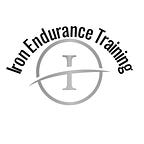Nutrition Basics
My problem with the above photo, the one on the left isn’t necessarily true. And the one on the right is far from realistic for most of us. In addition, maintaining a healthy diet without being able to manage stress levels, get proper sleep, and a efficient workout routine doesn’t guarantee a healthy life. Should we be eating according to the photo on the right most of the time? Absolutely!! Last year I wrote an article on the relationship we have with food, and what happens when we label a food as bad. My goal in writing that article for those struggling with weight loss is to always keep a good mindset.
My goal in this article is to help people understand food for what it is. In my experience, most people’s struggle with weight gain and weight loss is a lack of understanding as to what they’re putting into their bodies. And some information can be very misleading. For example, I looked up a nutrition menu from one of the more popular fast food chains to see how many calories was in their most popular burger. And according to their menu it was 1500 calories per serving, which is already a shit ton! But even worse, what’s not included in their information was how many servings the burger actually was. And yes, more often than not, most people that struggle with weight loss eat more like the photo on the left side, and thats why these foods tend to take the blame.
So let’s go over some nutrition basics. In the last paragraph the term “calorie” was brought up twice. Calorie is defined as a unit of heat energy, in the amount needed to raise 1 gram of water 1 degree celcius. We get our calories from food through a process called metabolism, where foods are refined and released into our systems for energy (similar to the way oil is turned into gas for automobiles). Any amount of calorie consumption, regardless of what food it comes from, thats not burned away from some type of movement or exercise is stored away in our bodies as fat.
Now there is one difference between the foods in the right photo. See, these foods have nutrients. So when we digest these foods, our bodies have to absorb the nutrients, and send them through our blood stream to the appropriate place. That in itself required more energy expenditure. The foods in the photo on the left have little to no nutrient content so they’re digested much easier, also known as empty calories. ONCE DIGESTED, ALL CALORIES ARE EQUAL.
4 calories- 1 gram of protein
4 calories- 1 gram of carbs
9 calories- 1 gram of fat
(Listed above are the 3 macronutrient groups. I give advice to my clients on these 3 groups. The micronutrient groups, vitamins, minerals, water, & alcohol is where I defer to registered dietitians for information, Ie: I stay in my lane as a personal trainer)
Of the 3 above mentioned macronutrients, I always recommend my own clients to prioritize protein ( unless someone has kidney issues). Thats because, just like the more nutrient dense foods, protein requires the most energy expenditure(calories burned) to digest. But I’ve never told a client that that can’t have a particular food if they want to reach their goal. And I never will. I just want my clients to understand food for what it is. It’s energy to be burned off. And it’s never a particular food’s fault. WE JUST HAVE TO UNDERSTAND WHAT WE’RE EATING, AND HOW MUCH WE NEED TO DO TO BURN THOSE CALORIES.
That might be the topic of my next article.
